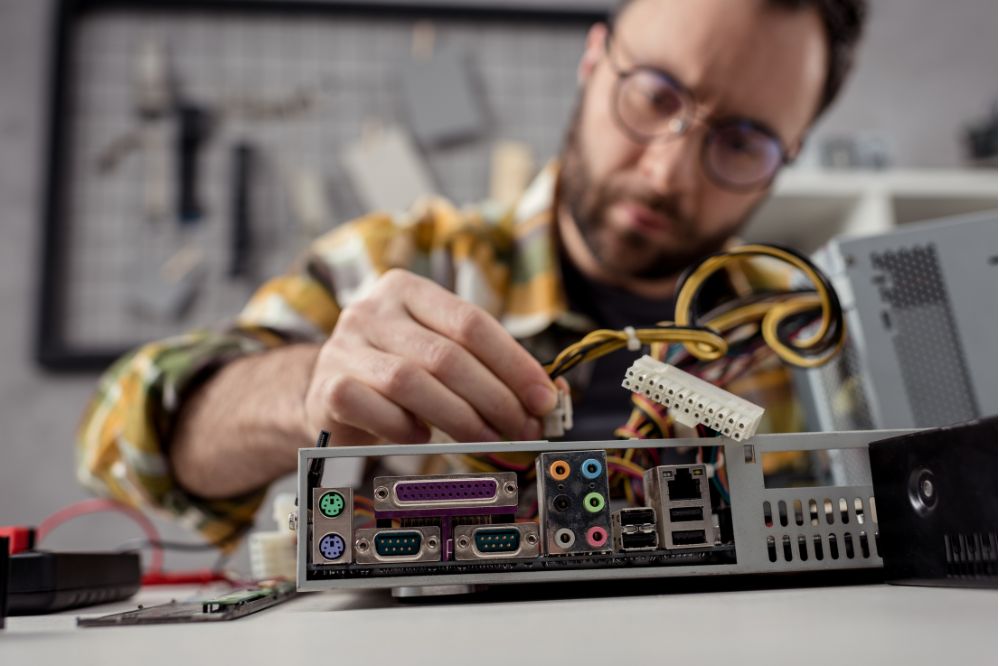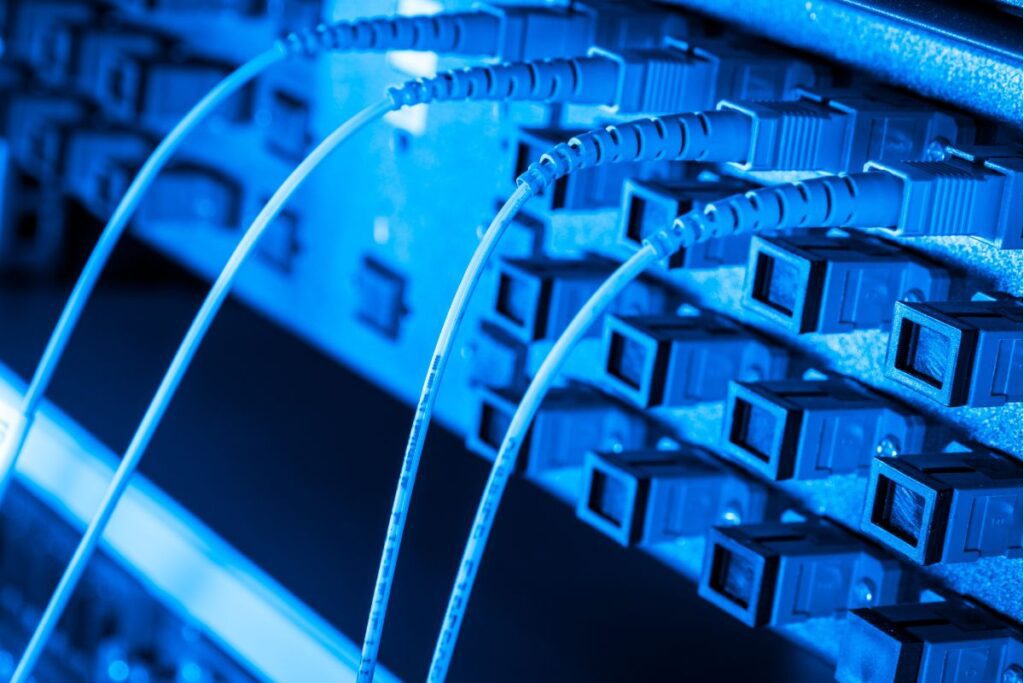One of the most important parts of setting up your office is laying down your data network cabling. Whether you’re moving into a new office or upgrading your existing network, you need to make sure installation runs smoothly.
While you’ll want to get your network configuration done as quickly as possible, all the requirements must be met to avoid any common errors.
Otherwise, the performance of your data network cabling will be impacted – an aspect that can affect your entire business.
Without further ado, here are some of the most common network cabling mistakes to avoid.
Data Network Cabling: What To Watch Out For
Using The Wrong Type Of Cable
A seemingly obvious, but harmful, mistake with data network cabling is using the wrong type of cable. Cables are not all made equal, with different options performing very specific functions.
Different types of cables can transmit data at varying levels and speeds, so the type you use must match your specific network requirements.
Choosing the wrong type of cable for your network’s needs can cause all kinds of problems – like poor transmission rates and increased interference.
So, make sure you understand your network’s requirements, data speeds, and environmental factors before selecting the appropriate cable. This is why working with experienced data network cabling technicians is crucial.
Poor Cable Management
Effective data network cabling is not just about installation. You also need to make sure that you maintain your network and keep cables properly managed.

If you neglect proper cable management, it could lead to a chaotic and disorganized cabling infrastructure. This not only looks unprofessional but can also result in accidental cable disconnections, increased signal crosstalk, and difficulties in troubleshooting your network.
Use cable trays, racks, and labels to keep your cabling system neat and organized. Understand exactly where each cable goes and what each cable does. This will make managing and growing your network a lot easier.
Not Future-Proofing Your Network
Technology is always developing and changing. If you want your business to be sustainable, then you should consider potential network expansions or upgrades.
The rule of thumb is to invest in network cabling that can handle greater data speeds and bandwidth requirements – even if you’re not using it at full capacity just yet.
What does growth for your business look like in the future? How should you go about scaling up your data network cabling to accommodate any growth?
Running Data Cables Alongside Electrical Cables
Your network cables carry and transit data, partly due to a magnetic field that the low voltage running through the cable produces. By running network cables alongside electrical cables, electromagnetic fields could be interrupted. This would result in slow, or even no, signal transmission.
Always try to avoid running data cables next to electrical cables. If you cannot avoid doing so, then try to run them perpendicularly so that they have less risk of disruption.

Placing Cables In The Wrong Position
Data network cabling should be a carefully planned process. People often forget how much space network cabling takes up – even when you apply proper cable management.
Make sure that your cabling doesn’t block any access areas or cause any hazards. You also need to make sure the cables don’t restrict access to any devices or maintenance points.
While you want the cables safely tucked away, they also need to be accessible for any maintenance to take place. So, ensure they’re not completely out of reach.
Overlooking Bend Radius
When you set up your data network cabling and start putting cables into place, you might find that you need to bend the cables quite a lot. Before adding any bends to the cables, make sure you understand the cable’s limits.
Every cable has a specific bend radius that you shouldn’t exceed. If you bend the cable too far, it could damage the cable or impact the signal the cable carries. This would reduce the quality of data transmission.
Mixing Different Types Of Cables
This isn’t a hard and fast rule, but it can make a big difference to the overall quality and management of your data network cabling.
Try not to mix different cable categories. This could create inconsistencies in how your network performs. It also makes the cables more difficult to manage and maintain.
By sticking to a single cable type, you’ll keep installation simpler and ensure network performance is consistent.

Overlooking Testing
You need to test your network cables as soon as they are installed. Otherwise, any possible issues in the network could go undetected.
Use cable testing tools, like cable certifiers and analyzers, to validate the installation and make sure that any faults or signal disruptions are identified.
Trying To Do It Yourself
All the data network cabling mistakes listed above could be avoided by using a qualified technician. While network cabling may seem straightforward, there are many essential details you need to pay attention to.
This is why it’s so important to work with a supplier with experienced technicians onboard who can handle the installation for you.
Not only will this make the installation more efficient, but it will also help you access a faster, more reliable cable network. This is key for any modern business that relies on strong network connections.
Conclusion
By using the methods listed above, you can easily avoid common mistakes when installing data network cabling. This is essential for keeping your business connected with effective phone systems, internet connections, and so on.
The most important step in managing data network cabling is working with a trusted provider. Get in touch with the team at Stellar Communications, where we can evaluate your needs and help install your network as efficiently as possible.
Our experienced technicians will ensure to avoid any cabling errors, setting you up with a cable network that provides an optimal experience for your business.









